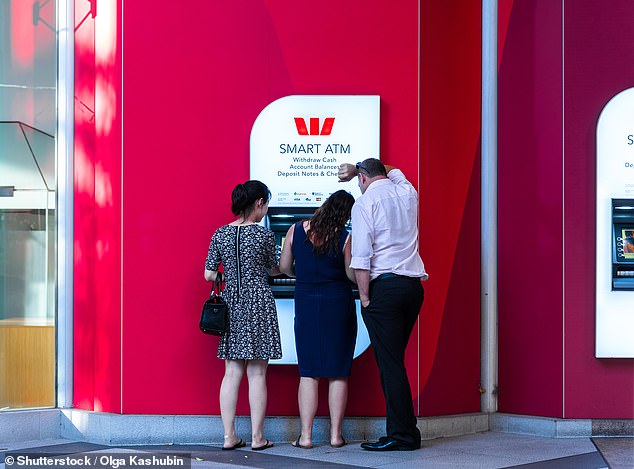Thousands of ATMs have been removed across Australia as the country continues to go cashless.
The number of bank-owned branches and ATMs has more than halved over the past seven years, falling from 19,508 to 8,836 as of June 30, 2024, with Westpac and Commonwealth Bank among the key players in this reduction.
In the last financial year, 926 ATMs were withdrawn, and a staggering 8,338 bank-owned ATMs were closed in the last seven years, data from the Australian Prudential Regulatory Authority has revealed.
Australia has also lost 230 bank branches in its major cities and 52 in regional areas. Additionally, 63 Australia Post outlets offering banking and cash services closed last year.
Jason Bryce, founder of Cash Advocacy group Cash Welcome, argued that banks needed to maintain access to cash services, despite the rise of digital payment methods.
“If a bank proposes to close a branch or ATM, it must publish a plan for how its customers will access fee-free local cash.”
‘Banks collectively must ensure there is easy local access to cash in all communities.
“Large retailers selling food, medicine and fuel must accept cash and must ensure that at least 40 percent of self-checkout terminals accept cash.”
Thousands of ATMs have been removed across Australia as the country continues to go cashless.
Bryce urges Australians to sign the petition.An Australian bank and cash guarantee‘, which puts the responsibility on banks to keep cash in circulation rather than closing regional branches and ATMs.
Angel Zhong, associate professor of finance at RMIT, said banknotes have become much rarer in everyday transactions due to the modernization of digital transactions.
“The shift to a cashless society in Australia is not just a possibility, it is already underway,” he explained.
However, many older Australians still prefer to pay in physical currency, with almost one in five classified as a “cash-heavy user”.
Dr Zhong said Australia needed to provide “better support for other age groups to adopt technology, better literacy around technology systems and financial assistance” for those struggling with the transition to digital payments.

Earlier this week, the federal government said it was prepared to ban debit payment surcharges by 2026, pending a review by the Reserve Bank.
Another problem with digital transactions was that they often incurred a surcharge, which may not be immediately apparent at the time of purchase.
Earlier this week, the federal government said it was prepared to ban debit payment surcharges by 2026, pending a review by the Reserve Bank.
“Surcharges were introduced as a way for businesses to pass on fees for processing transactions and renting payment terminals from banks,” Dr Zhong explained.
‘However, this practice becomes problematic when surcharges exceed the actual cost of processing payments, an issue which is currently being reviewed by the RBA.
“It is also important that any reform maintains an optimal balance to support businesses, which may have to bear additional banking costs to continue operating payment terminals.”


